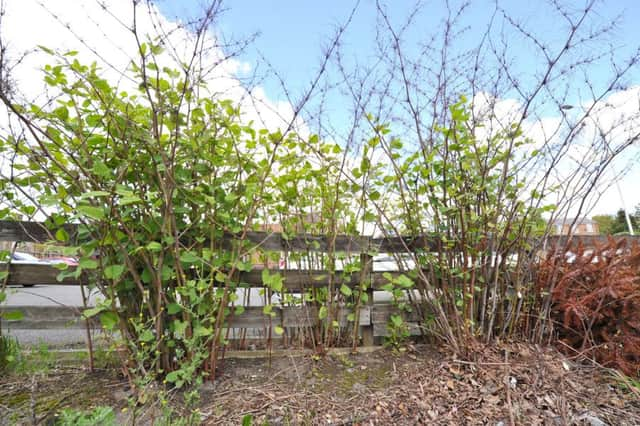Sussex gardeners warned to watch out for these rogue plants


Gardening experts at online retailer BillyOh.com have researched and revealed the plants that can wreak the most havoc on land and property.
A spokesman said: “As well as damaging buildings and local habitats, these plants and weeds are also incredibly difficult to control.
Advertisement
Hide AdAdvertisement
Hide Ad“Because they’re largely resistant to most forms of weed and plant killer, you have to take extra measures to destroy them.
“And in some instances, because they’re so fast growing and hard to regulate, it’s actually illegal to plant them in the UK.”
He added: “Some are capable of destroying entire habitats if left untreated, whilst others can also produce a nasty sap that can irritate and burn human skin.
“Where possible, controlling these nuisance weeds should be done using non-chemical means such as digging out or supressing with mulch.
Advertisement
Hide AdAdvertisement
Hide Ad“But quite often these methods are not feasible or effective, and so chemical controls may need to be used.”
The top five most troublesome plants are
1. Japanese knotweed
Despite the fact this plant can only spread by its roots (as it doesn’t produce seeds), its root system is both extensive and strong. Digging the weed out is the most environmentally friendly method, but if even the smallest bit of root – or rhizome – is left, it can produce an entirely new plant.
Chemical sprays can be applied to the leaves to be absorbed by the entire plant, but it will still take a few years to kill this troublesome weed.
This plant can grow up to 10cm a day, and there have even been cases of buyers pulling out of house sales after discovering knotweed on their prospective property, as well as sellers struggling to secure mortgages on properties affected by the plant.
Advertisement
Hide AdAdvertisement
Hide AdAs such, it is an offence against the 1981 Wildlife and Countryside Act to grow it, and if it isn’t controlled by those who have it in their garden, a community protection notice can even be given.
2. Giant hogweed
Originally from Southern Russia and Georgia, giant hogweed can reach over 3m in height and most alarmingly, its sap can cause quite nasty skin burns.
Although there is no statutory obligation for landowners to eliminate this plant, like with Japanese knotweed it is an offence to actively cause giant hogweed to grow and local authorities will often take action to remove infestations in public areas.
When tackling giant hogweed, you should always wear gloves, cover your arms and legs, and ideally wear a face mask when working on or near it.
More news:
3. Himalayan balsam
Advertisement
Hide AdAdvertisement
Hide AdDespite boasting a pretty display of pink flowers, Himalayan balsam can be very difficult to control once it takes hold in your garden, reaching well over head height and proving to be a nuisance weed problem.
This is partly due to the fact it produces up to a whopping 800 seeds every year – which can each survive for up to two years – and also the fact it can survive in shady positions without much sun.
Introduced to the UK in 1839, it also shades out other vegetation, gradually impoverishing habitats by killing off other plants.
4. Rhododenron ponticum
This shrub, which produces big, purple flowers, can spread like wildfire causing huge damage to many native woodlands, heaths and other wild places.
Advertisement
Hide AdAdvertisement
Hide AdIt grows into huge bushes with thick vegetation that blocks out sunlight and smothers most other wild plants and trees, stopping them from growing or regenerating, and its leaves are toxic to animals and repel wildlife from earthworms to birds.
Each plant can produce one million or more tiny seeds each year that spread in the wind, and it’s incredibly difficult to get rid of by simply digging it up or using herbicides.
5. New Zealand pigmyweed
This invasive species grows primarily in water, or soil with a heavy water content next to lakes and streams, for example.
Due to the dense matting it creates on the surface of ponds, it can reduce the oxygen available to fish and frogs, therefore making garden ponds virtually uninhabitable.